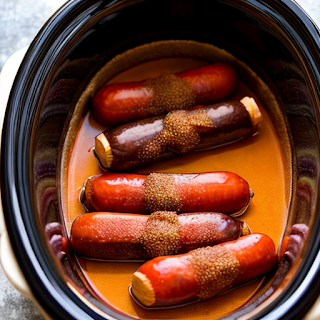The origins of Little Smokies trace back to Europe, where small sausages have been a part of culinary traditions for centuries. However, it wasn't until the early 20th century that these miniature sausages gained popularity in the United States. Originally made with smoked pork or beef, Little Smokies were typically served as a main dish or included in casseroles.
The advent of the slow cooker in the 1970s revolutionized the way many dishes were prepared, including Little Smokies. Slow cooking allowed the flavors to meld together beautifully, resulting in a more tender and flavorful end product. As a result, Slow Cooker Little Smokies became a ubiquitous appetizer at parties and gatherings across America.
Ingredients:
- 1 package (14-16 ounces) of cocktail-sized smoked sausages (Little Smokies)
- 1 cup of ketchup
- 1 cup of brown sugar
- 1 tablespoon of Worcestershire sauce
- 1 teaspoon of mustard powder
- 1 teaspoon of garlic powder
- 1 teaspoon of onion powder
- Salt and pepper to taste
Procedure:
1. Begin by preparing your slow cooker. If necessary, spray the inside of the slow cooker with non-stick cooking spray to prevent sticking.
2. In a mixing bowl, combine the ketchup, brown sugar, Worcestershire sauce, mustard powder, garlic powder, onion powder, salt, and pepper. Stir until the ingredients are well incorporated.
3. Place the Little Smokies in the slow cooker, arranging them in a single layer if possible.
4. Pour the sauce over the Little Smokies, ensuring that they are evenly coated.
5. Cover the slow cooker with the lid and cook on low heat for 4-6 hours, or until the sausages are heated through and the sauce has thickened slightly. Alternatively, you can cook them on high heat for 2-3 hours.
6. Once cooked, serve the Slow Cooker Little Smokies directly from the slow cooker, using toothpicks for easy serving.
Preparation Time:
- Preparation: 10 minutes
- Cooking: 4-6 hours on low heat or 2-3 hours on high heat


Comments
Post a Comment
Thanks for your feedback